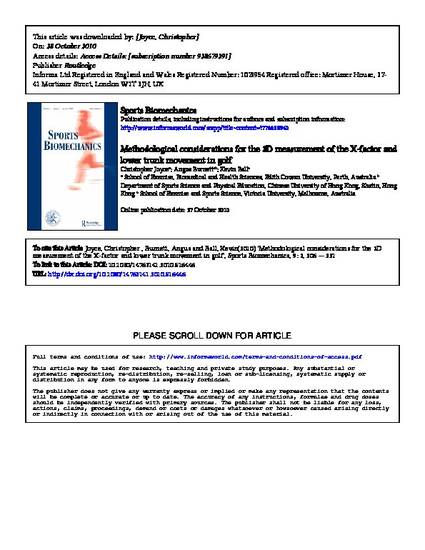
Article
Methodological considerations for the 3D measurement of the X-factor and lower trunk movement in golf
Sports Biomechanics
(2010)
Abstract
It is believed that increasing the X-factor (movement of the shoulders relative to the hips) during the golf swing can increase ball velocity at impact. Increasing the X-factor may also increase the risk of low back pain. The aim of this study was to provide recommendations for the three-dimensional (3D) measurement of the X-factor and lower trunk movement during the golf swing. This three-part validation study involved; (1) developing and validating models and related algorithms (2) comparing 3D data obtained during static positions representative of the golf swing to visual estimates and (3) comparing 3D data obtained during dynamic golf swings to images gained from high-speed video. Of particular interest were issues related to sequence dependency. After models and algorithms were validated, results from parts two and three of the study supported the conclusion that a lateral bending/flexion-extension/axial rotation (ZYX) order of rotation was deemed to be the most suitable Cardanic sequence to use in the assessment of the X-factor and lower trunk movement in the golf swing. The findings of this study have relevance for further research examining the X-factor its relationship to club head speed and lower trunk movement and low back pain in golf.
Keywords
- golf,
- x-factor,
- 3D
Disciplines
Publication Date
Spring September 1, 2010
DOI
DOI: 10.1080/14763141.2010.516446
Citation Information
Christopher Joyce, Angus Burnett and Kevin Ball. "Methodological considerations for the 3D measurement of the X-factor and lower trunk movement in golf" Sports Biomechanics Vol. 9 Iss. 3 (2010) p. 206 - 221 Available at: http://works.bepress.com/chris-joyce/17/
